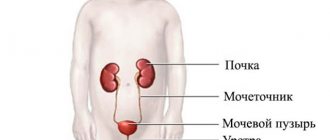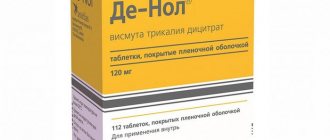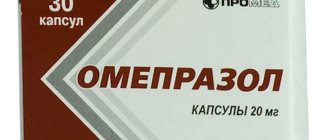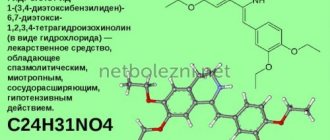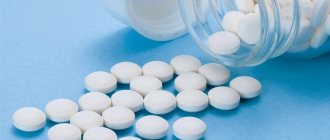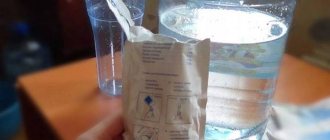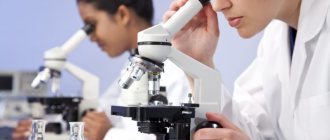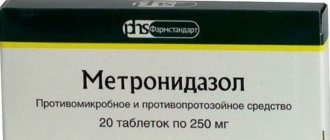A coprogram is a type of laboratory examination of feces, based on the determination of physical, chemical and microscopic characteristics, which allows one to diagnose abnormalities in the functioning of the organs of the digestive system in general and each individually.
This analysis allows you to characterize the state of the child’s gastrointestinal tract, and, if necessary, assess the degree of progression of the disease and the effectiveness of its treatment. The particular value of the study is due to the fact that the bolus of food, from which feces are subsequently formed, passes through the entire intestine and ultimately provides maximum information about the state of all its departments. There is no difference whether scatology or coprogram is prescribed, so from the point of view of the essence of the study it is one and the same.
How to prepare for a stool test?
Preliminary preparation for submitting the material for children and adults normally lasts 3-4 days. It is aimed at cleansing the intestines and preventing food debris, muscle and plant fibers from entering the feces. With special training, laboratory assistants will be able to detect even a small degree of disruption of the evacuation and digestive functions of the digestive tract.
The essence of preparation is to follow a special diet with a certain content of proteins, fats and carbohydrates. Two types of diets are suitable for this purpose: according to Pevzner and according to Schmidt.
Pevzner's diet
It involves eating black and white bread, meat (boiled or fried), sauerkraut, rice and buckwheat porridge, fresh apples, potatoes (in any form), and butter. The total energy value is about 3000 kcal per day.
Diet according to Schmidt
She is gentle. It is recommended to eat 5 times a day, mainly dairy products (milk, butter), a couple of eggs, meat, potatoes, oatmeal (mucus broth). Daily caloric intake should be limited to 2200-2400 kcal.
Feces for occult blood
- Before examining stool for occult bleeding, patients are not recommended to eat foods that may cause a false-positive reaction to blood. These include: all varieties of green vegetables (cucumber, cabbage), fish, meat, eggs, tomatoes.
- Patients should also refrain from taking medications containing iron (ferrum-lek, ferrumbo).
If you urgently need to get tested or your health does not allow you to follow a diet, it is recommended not to drink alcoholic beverages, tea, or coffee for at least 24 hours.
Occult blood test
This examination is practically indispensable for identifying hidden bleeding localized in the organs of the digestive system. Such bleeding often becomes an early sign of a number of severe gastrointestinal pathologies, including oncology. With unnoticed bleeding, even if it has existed for quite a long time, it is quite difficult to detect the presence of blood in the stool, both visually and microscopically. Sometimes this is impossible.
This diagnosis is made by changing the amount of modified hemoglobin. A positive reaction of the studied biomaterial means that the patient has diseases of the gastrointestinal tract, accompanied by a violation of the integrity of the mucosal surface. This is typical for gastric and duodenal ulcers, Crohn's disease, polyps, ulcerative colitis, and helminthic infestations.
Diagnostics is also used to determine the presence of tumors, both primary and metastatic, since even in the initial stages they lead to damage to the intestinal mucosa. The reliability of the analysis increases significantly when it is carried out twice. At the same time, a negative result is not one hundred percent confirmation of the absence of an erosive-ulcerative lesion or neoplasm in the gastrointestinal tract in the person being examined.
Attention! The results of a fecal occult blood examination must be considered in conjunction with other tests - in themselves they are not an indisputable criterion for establishing a diagnosis.
How to take a coprogram?
The material should be collected in a clean container after spontaneous bowel movement in the morning. 10-15 g of feces is enough for the study. In rare cases, your doctor may order a 24-hour stool test. In this case, the patient must collect stool for 24 hours.
If the patient suffers from prolonged constipation and cannot empty himself, it is recommended to massage the colon. If this procedure does not bring results, the patient should undergo a cleansing enema. In this case, a solid piece of feces is taken from the washing water.
Analysis collection method:
- In the morning after sleep, the patient is advised to defecate in a pot or vessel
- then, using a special stick or spatula, take a small amount of feces into a clean, dry jar and close the lid tightly.
- It is advisable to immediately deliver the analysis to the laboratory. The deadline is 8-10 hours. After this time, the material may deteriorate and become unsuitable for examination.
- Stool is stored at a temperature of 3-60C.
When examining for worm eggs, the material must be completely fresh, that is, delivered to the laboratory warm.
Stool sampling during bacteriological examination is carried out with the help of a laboratory assistant. The patient is asked to lie on his right side or lean forward while standing. The laboratory assistant spreads the patient's buttocks and inserts a metal loop with a cotton swab wrapped around it into the anus. The insertion should be carried out with rotational movements, very carefully so as not to damage the mucous membrane of the anus. The loop is also carefully removed and then placed in a sterile tube.
Rules for collecting and preparing for delivery of material
How to properly prepare for a stool test:
Before taking a coprogram test, you need to tell your doctor about all the medications you took shortly before the test, as well as those you are taking now. It is also necessary to report a colonoscopy or barium radiography of the gastrointestinal tract.
- Stop taking certain medications that may affect the test result 1-2 weeks in advance (by decision of the attending physician). These are iron preparations, antibiotics, bismuth preparations, NSAIDs, antacids, antidiarrheal and anthelmintic drugs, laxatives.
- If you have visited other countries in the past few months, you should tell your doctor, as some viruses, bacteria and protozoa found in certain regions may affect test results, including stool tests.
- If at the time of taking the test you are menstruating or have bleeding hemorrhoids, the collection of material should be postponed.
- Stool that has been in contact with water, urine, detergents or disinfectants should not be used for testing.
Rules for collecting material for analysis:
It is necessary to carry out hygienic treatment in the anus and genital area with clean water and soap.
- Feces are taken with a special spoon into a special container, issued by a laboratory or purchased at a pharmacy. For general analysis, 3-5 cm3 (approximately a teaspoon) of material is needed.
- The container is tightly closed, signed and sent to the laboratory.
- If it is not possible to immediately send the copro material to the laboratory, it should be stored at a temperature of +3 ºС -+5 ºС for no more than 8 hours.
Coprogram analysis
Norm of indicators | Microscopic examination | ||
| Dense |
| None |
| Decorated |
| Single |
| Brown |
| None |
| Unsharp, specific feces |
| |
| From 6.01 to 8.01 |
| |
| A small amount of |
| A small amount of |
| None |
| Single fibers |
|
| Absent | |
| Positive |
| Small number |
| Negative |
| None |
| |||
| |||
When is a study prescribed, and what is its essence?
Stool analysis is considered one of the most important tools for assessing the functionality of the intestines, liver, pancreas and gall bladder, allowing a preliminary diagnosis to be made for the patient. Like a clinical urine test, coproscopy provides a detailed physical characteristic (by appearance), and also allows you to determine the microscopic and chemical composition of the biomaterial under study using special reagents. Scatology is a way to detect bacteria and occult blood that are not visible to the human eye.
A general stool analysis is rarely prescribed to a patient as a separate study and often acts as an additional, but extremely informative diagnostic tool. He is appointed:
- during preventive examinations of children and adults in the clinic (dispensary examination),
- if you suspect dysbiosis and irritable bowel syndrome (IBS),
- in case of malabsorption (celiac disease, ulcerative colitis, malabsorption),
- in the complex diagnosis of secretory insufficiency and inflammation of the upper gastrointestinal tract (duodenitis, GERD, gastritis),
- for acute and chronic hemorrhoids, rectal hernia,
- in the diagnosis of genetic pathologies, oncology, HIV infection.
A coprogram is also a way to detect the antigen of rotavirus infection in the event of infection with it. In addition to the above, the study allows you to learn about the effectiveness of the prescribed treatment for gastrointestinal diseases.
Coprogram indicators
Scatological analysis includes macroscopic indicators of the resulting sample: volume, consistency, smell, shade, nature of possible impurities. Biochemical examination reveals pigments, protein structures, fats and hemoglobin. Stool microscopy determines the presence of leukocytes, red blood cells, fibers and crystals.
An extended coproscopic examination includes an immunochemical analysis of feces, which allows you to confirm or refute the presence of occult blood (Gregersen test), transferrin and trypsin. The presence of trypsin indicates pathology of the pancreas, and transferrin and red blood cells can be signs of the development of cancer. A rapid test for pancreatic elastase is also performed, and a coprocytogram is prescribed to identify parasites.
Decoding stool analysis in middle-aged and older children and adults
Quantity
- Normally, a person excretes 150-200 g of feces per day 1-2 times.
- For children, the weight of feces is 80-150 g per day
The volume of bowel movements depends on the amount of food eaten and its quality composition. For example, if a person eats meat or dairy products, the amount of feces decreases. Plant foods, on the contrary, increase its volume. Pathological reasons for changes in the amount of feces in the table:
Polyfecality (increased volume of stool) | Oligofecalia (decreased volume of stool) |
|
|
Consistency and shape
Stool of a dense consistency and shaped (sausage-shaped) is considered normal. Loose, unformed stools are called diarrhea. This condition is usually accompanied by increased bowel movements and polyfecal loss. Diarrhea occurs:
- osmotic - occurs due to impaired absorption of osmotically active substances (potassium, sodium) and proteins - pancreatitis, Crohn's disease, sprue, taking magnesium sulfate;
- secretory - usually caused by inflammatory processes in the intestines (enteritis, colitis);
- motor – occurs with increased peristalsis of the digestive tube (laxatives);
- mixed – due to all of the above factors.
The peculiar ribbon-like shape of feces can be caused by spasms in the rectum and sigmoid colon. When the evacuation of food from the intestines is impaired, a person experiences constipation. In this case, feces become hard, dense, similar to sheep balls. Its hardness is due to excessive absorption of water.
Color
Normal stool is brown in color. This is due to the presence of stercobilin in it, a breakdown product of bilirubin, which is released into the intestines with bile. The change in color of the material may be due to various factors:
| Stool color | What is the reason |
| Light yellow | Occurs when consuming large amounts of dairy products. |
| Bright yellow | The reason is the accelerated evacuation of food from the intestines (diarrhea of infectious and non-infectious origin) or treatment with medications from hay. |
| Dark brown (pleiochromia) |
|
| Black (tarry) – melena |
|
| Greenish | Eating a lot of lettuce, asparagus, celery, sorrel. |
| In the form of "rice water" | Transparent stool with flakes is observed with cholera. |
| In the form of "pea soup" | Such material indicates the presence of typhoid fever in the patient. |
| Red, reddish | Occurs when bleeding from the lower intestines (rectum and colon). |
| Discolored, clayey (acholic) | Feces lose their color due to the cessation of stercobilin entering the intestines. This happens when:
|
| Light |
|
Smell
Normal stool has a mild, specific odor. This is due to the processes of bacterial fermentation that occur in the intestine. During the breakdown of proteins, indole, skatole, phenol and cresol are formed, and they form the odor of feces.
The smell of stool weakens with a plant-based diet and constipation, and increases with a meat diet and diarrhea.
A sharp, foul odor indicates putrefactive processes in the intestines. The sour aroma of excrement indicates the presence of an increased amount of fatty acids (propionic, butyric).
Visible impurities
Normally, the stool should not contain blood, mucus, undigested food remains, stones, helminths, and so on. Their presence indicates a pathological process in the gastrointestinal tract.
| Impurity | What does it mean |
| Lumps of undigested food |
Normally, feces may contain small bones, peels of vegetables and fruits, cartilage, cucumbers, and nuts. |
| Fat | This may occur due to insufficient pancreatic function. In this case, the feces become shiny, ointment-like, with white lumps. |
| Slime | Normally, a small amount of mucus is allowed in the stool. Its abundance indicates inflammatory processes in the intestine, both infectious (dysentery, salmonellosis) and non-infectious (ulcerative colitis). Mucus may be mixed with stool or located on its surface. |
| Blood | The release of small portions of blood is usually invisible to the human eye and can only be detected by microscopic examination. An admixture of scarlet blood indicates bleeding from the lower intestines or from the initial sections, if motility is increased. |
| Pus | Pus appears in feces during severe inflammatory pathologies (dysentery, intestinal tuberculosis), rupture of an abscess into the intestinal lumen, or suppuration of a tumor. |
| Worms | Some helminths (whipworms, pinworms, roundworms) can be excreted in the stool entirely or in fragments. |
| Stones | Coprolites (fecal stones), gallstones, pancreas. |
pH
In a healthy person with a normal diet, feces have a neutral or slightly alkaline reaction (pH 6.87-7.64). Change in stool pH:
- acidic reaction (pH 5.49-6.79) – occurs when the absorption of fatty acids in the small intestine is impaired;
- sharply acidic reaction (pH less than 5.49) - occurs with excessive activity of fermentation microflora or lactose intolerance;
- alkaline reaction (pH 7.72-8.53) - occurs when proteins rot (excessive consumption of meat);
- sharply alkaline reaction (pH more than 8.55) - indicates putrefactive dyspepsia.
Reaction to occult blood
Hidden blood is called blood that is not visible to the human eye (macroscopically) and under a microscope. Normally, the reaction can be positive if you eat meat, fish, blood sausage, iron supplements, vigorously brush your teeth, or get menstrual blood into your stool. Pathologies that cause the appearance of blood in feces:
- gum disease (gingivitis, periodontal disease);
- peptic ulcer of the stomach and duodenum;
- ingestion of blood from the upper respiratory tract (nosebleeds);
- bleeding tumors;
- varicose veins of the esophagus and rectum;
- Mallory-Weiss syndrome;
- helminthic infestation;
- intestinal tuberculosis;
- dysentery;
- colitis;
- hemorrhagic vasculitis;
- Stevens-Jones syndrome;
- haemorrhoids;
- intestinal polyposis;
- typhoid fever.
Reaction to protein
Normally, the reaction to protein is always negative. It can be positive when:
- inflammatory diseases of the gastrointestinal tract (gastritis, duodenitis, enteritis);
- dysbacteriosis;
- celiac disease.
Reaction to stercobilin
Stercobilin is a breakdown product of bilirubin, which gives stool a brown color. It is secreted into the duodenum with bile. Normally, 100 g of feces contains 75-100 mg of stercobilin. Changes in the content of stercobilin in stool can occur in various diseases:
| Increase in stercobilin | Decreased or absent stercobilin |
|
|
Reaction to bilirubin
Bilirubin can normally be detected in the stool of a breastfed infant. It gives feces a greenish color. In an adult, only bilirubin breakdown products are excreted in feces. Detection of bilirubin in stool occurs when:
- diarrhea;
- severe dysbacteriosis while taking antibiotics.
Microscopic examination of stool
| What is discovered | What pathologies does it indicate? |
| Muscle fibers with and without striations (creatorhoea) |
|
| Connective tissue (connective tissue fibers) | It is detected when there is a deficiency of pepsin in gastric juice and diarrhea. The detection of bones and cartilage in the stool is not a pathology. |
| Plant fiber |
|
| Starch |
|
| Fat and its products (fatty acids, salts of fatty acids) |
|
| Intestinal epithelium (squamous and columnar) |
|
| Leukocytes | Neutrophils:
Eosinophils:
|
| Red blood cells | Their detection indicates bleeding into the lumen of the digestive tract. |
| Crystal formations | Human feces may contain:
|
| Protozoa |
|
| Worm eggs | In cases of helminthiasis, whipworm, roundworm, and pinworm eggs are released in feces. |
| Bacteria and fungi | Bacteria found in feces can be pathological (Escherichia coli, Proteus) or part of the normal microflora (lacto- and bifidobacteria). Among fungi, the detection of Candida mycelium is of diagnostic importance. |
Chemical research
Chemical examination of stool includes determination of pH, occult blood, stercobilinogen, bilirubin, ammonia, protein, etc.
The acid-base reaction (pH) of stool is determined using litmus paper. Normally, feces have a neutral or slightly alkaline reaction. When fermentation processes predominate, the reaction becomes acidic, while putrefactive processes become alkaline.
Examination of feces for occult blood
This analysis is based on the color change of a number of substances (benzidine, amylopyrine, double resin) during their oxidation. The role of a catalyst in this case is played by hemoglobin (or hematin) in the blood.
The most commonly used reactions are Weber and Gregersen with benzidine. The Weber reaction is positive only when 30 ml of blood is released per day. The Gregersen reaction reveals blood loss exceeding 15 ml of blood per day. But it often gives false positive results due to the heme contained in the meat.
More accurate information about the degree of blood loss from the gastrointestinal tract and the presence of blood in the stool is provided by determining blood loss using the radionuclide method using labeled erythrocytes. Normally, the amount of radionuclides penetrating into feces is equivalent to 0-2 ml of blood. This method allows one to judge blood loss by the radioactivity of stool.
This method made it possible to establish that melena (black tarry stool) appears when blood loss is more than 100 ml per day.
By measuring the amount of radionuclides in the feces over a certain time, one can roughly judge the daily amount of blood lost and the increase or decrease in bleeding.
When examining stool for occult blood, 3 days before the test, meat, fish, green vegetables, tomatoes, as well as medications containing iron, copper and other heavy metals should be excluded from the diet.
Determination of stercobilinogen and bilirubin
Of the bile pigments, stercobilinogen is normally released in the stool, which is oxidized in air to stercobilin; it is this that gives the stool its usual brown color.
Normally, the amount of stercobilinogen is 40-350 mg per 100 g of feces.
The amount of stercobilinogen increases due to increased breakdown of red blood cells, decreases during inflammatory processes in the biliary tract, and is absent when the bile duct is completely blocked by a stone or tumor.
There should normally be no bilirubin in the stool of an adult. It can be detected with accelerated peristalsis, enteritis, and dysbacteriosis.
Protein determination
The detection of soluble protein in feces indicates an inflammatory process in the intestinal mucosa, ulcerations accompanied by cellular decay and bleeding.
Using a chemical study, fats, bile acids, enzymes (alkaline phosphatase, enterokinase), and the intensity of the putrefaction process in the colon can also be determined in feces.
Coprogram in a newborn and infant
Features of stool after the birth of a child
- In the first couple of days after the baby is born, he produces a special stool called meconium. Meconium is dark green or olive in color and is a thick, homogeneous mass.
- After a week, mucus and lumps appear in the baby’s stool, and stools become more frequent and loose. The color of feces also changes: dark green gives way to yellow and yellow-brown.
Analysis of stool in children of such a young age has a number of features. At birth, the baby’s intestines are not yet sufficiently developed and are not adapted to receiving regular adult food. Therefore, proper feeding is a very important factor in the development of a baby.
In the first days of life, the baby receives all the necessary microelements, nutrients and vitamins through mother's milk. Also, during feeding, the baby's intestines are contaminated with lacidobacteria and bifidobacteria, which are necessary for the production of feces.
If a pediatrician orders a baby to undergo a stool test, the mother must follow a certain diet for 2-3 days, since what the mother eats must enter the baby’s body with milk.
Features of mommy's diet (see what a nursing mother can eat):
- exclude all possible allergens (eggs, citrus fruits, chocolate);
- do not drink alcohol, do not smoke;
- It is preferable to eat slimy porridges (oatmeal, rice), vegetable soups, steamed cutlets;
- do not abuse fatty foods or easily digestible carbohydrates.
However, the mother cannot always provide the baby with enough milk. Recently, infants are starting to be supplemented with formula feeding from the first months or are immediately transferred to artificial feeding.
Main differences
The coprogram for natural and artificial feeding of children may differ. No matter how balanced the formula is, it will never replace breast milk in quality. This is also reflected in the functioning of the baby’s digestive system, the product of which is feces.
| Options | When feeding formulas | When feeding with milk |
| Daily amount | Up to 35-45 grams | The normal amount is considered to be 45-55 grams |
| Color | Light brown | Yellow with a greenish tint (this color is due to the presence of bilirubin in the stool, which is considered normal) |
| Smell | More putrid | More sour |
| pH | Slightly alkaline (7.58-7.74) | Slightly acidic (5.52-5.89) |
| Fats and fatty acids | Drops of neutral fat | Fatty acids and their salts (provide acidic stool) |
| Slime | None or small amount | |
| Blood | Absent | |
| Leftover undigested food | Possibly a small amount due to immature intestinal microflora | |
| Reaction to stercobilin | Positive | |
| Reaction to bilirubin | ||
| Reaction to protein | Negative | |
| Reaction to occult blood | ||
| Muscle fibers | Possibly in small quantities | |
| Leukocytes | In small quantities | |
| Intestinal epithelium | ||
| Red blood cells | None | |
Author:
Selezneva Valentina Anatolyevna physician-therapist
For dysbacteriosis
Analysis of stool for dysbiosis is the study of the intestinal flora inhabiting the human body. There are many reasons why representatives of beneficial flora may disappear and various types of pathogenic microorganisms may appear or multiply.
This analysis allows us to evaluate the quantitative content and ratio of “beneficial” (Escherichia coli, lactobacilli, bifidobacteria) and opportunistic (clostridium, fungi, staphylococci, enterobacteria) microorganisms. As well as the presence of pathogenic ones, such as, for example, salmonella or shigella and other types of microbes.
Colonic endoscopy - what is it?
Analysis is prescribed when:
- unstable bowel function (diarrhea, constipation);
- discomfort and pain in the abdomen, flatulence;
- intolerance to certain foods;
- rashes on the skin;
- allergic reactions;
- intestinal infections;
- long-term treatment with anti-inflammatory drugs and hormones;
- determining the characteristics of disorders of the intestinal biocenosis.
The study is also indispensable for newborn babies who are at risk and adolescents who often suffer from respiratory diseases or have allergies. The preparation is no different from the algorithm described above, only the sample must be submitted to the laboratory no later than 1-2 hours after its collection. The analysis time, which includes its decoding, is 5-8 days.
Normal indicators of stool testing for dysbacteriosis
Diagnostic measures
The collection of complaints and anamnesis is accompanied by clarification of when the symptoms appeared, what the patient associates with their occurrence, when the stool acquired an oily character. The specialist clarifies the presence of congenital diseases or inherited pathologies among the patient’s relatives. Next, the doctor examines the patient. The presence of exhaustion, the condition of the skin and mucous membranes are determined, and palpation and percussion of the abdominal organs is performed.
Coprology (laboratory examination of stool) consists of assessing the following indicators:
- Macroscopy - steatorrhea manifests itself in the form of lighter-colored stools with the sheen of frozen fat.
- Microscopy determines the presence of lipids, fatty acids, and soap. Normally, no more than 5 g of neutral fat should be excreted in stool within 24 hours. The results above are pathological.
If necessary, a radioisotope study, ultrasound examination of the abdominal organs, colonoscopy, assessment of the hormonal balance of the body, consultation with an endocrinologist and therapist are used.
Stool color and smell
The familiar brown tint of discharge is considered normal in adults. But in infants and small children, the color of bowel movements is different.
British scientists say they have found a way to diagnose different types of bowel disease - by testing the smell of a patient's stool.
What does the color of a child’s stool indicate? How to understand what to do if it has changed:
- black - perhaps this is a sign of bleeding in the gastrointestinal tract;
- brown - indicates colitis, constipation, consumption of protein, plant foods;
- red – for focal lesions of the stomach;
- greenish – baby food containing vegetable ingredients;
- light yellow – during the period of milk feeding;
- white stools – problems with the liver, duodenum, jaundice.
Often in childhood, there may be a dramatic difference in the color of the stool from a yellow and golden hue. In this case, you should take a close look at the baby’s nutrition, especially for a baby on artificial feeding with additives.
If everything is fine with your diet and the color of the discharge does not change, you should undergo an examination.
The appearance of red blood cells in the stool
Normally, there should be no red blood cells (blood) in the stool. The appearance of blood indicates damage to the mucous membrane of the digestive organs. The presence of red blood cells should cause concern, as this indicator indicates the presence of serious diseases. These include:
With hemorrhoids, blood is found in the stool
- fissures in the anus;
- haemorrhoids;
- proctitis;
- ulcerative colitis;
- benign or malignant neoplasms in the rectum;
- peptic ulcer of the stomach or duodenum;
- diverticula;
- dilation of the veins of the esophagus, which occurs with cirrhosis of the liver;
- cancer of the digestive organs.
Every person should undergo a stool test at least once a year, which will allow problems with the digestive system to be identified at an early stage and the development of serious consequences to be avoided.
Indications for use
Stool analysis is prescribed as part of a general diagnostic study to detect diseases:
- stomach in acute or chronic stage;
- any part of the intestine;
- liver;
- gallbladder and its ducts;
- pancreas;
- helminthic infestation;
- cancerous tumors;
- dysbacteriosis.
A stool examination is prescribed if there is a suspicion of:
- hemorrhoids and anal fissures;
- chronic constipation and Crohn's disease;
- colitis and ulcers;
- polyps in the large intestine;
- acute intestinal infections;
- pancreatitis and cirrhosis of the liver;
- anemia and amoebic dysentery.
And this is not the entire list of diseases that are not only diagnosed, but also observed during general therapy.
Typically, at the first visit, the patient complains of pain in the abdomen, constipation or diarrhea, excessive gas formation and bloating, cramps, colic, blood and mucus in the stool.
To quickly identify the pathogen in case of poisoning, a general stool analysis is also prescribed.
For children, such diagnostics are carried out in case of allergic reactions, suspicion of helminths, or any other digestive disorders.
What are stercobilin and bilirubin: norm and deviations
Bacterial formation of intestinal microflora occurs in children under 3 months. At this age, their feces are not colored, since only bilirubin is present.
Stercobilin is an enzyme that gives stool its natural brown color. It is formed from bile and is the result of the processing of bilirubin. Only after 9 months is the baby’s intestinal microflora fully formed, which means that the result of stool coprogram shows only stercobilin.
The absence of stercobilin in the stool (acholic stool) indicates blockage of the common bile duct by a stone or compression of the common bile duct by a tumor.
If bilirubin is detected in a child at 10 months, this may mean:
- dysbacteriosis;
- accelerated bowel function;
- metabolic disorder;
- hepatitis;
- stones in the biliary tract;
- inflammation of the lymph nodes;
- improper functioning of the spleen.
All these complications will be indicated during the examination. Follow-up treatment will be required.
Undigested plant fiber
It is this type of fiber that can often be found. Digestible is completely absent.
Indigestible fiber is not broken down in the intestines and is always present in the feces in varying quantities if a person eats plant foods.
Reasons why undigested plant fiber is observed in stool:
- pancreatitis;
- high content of plant foods in the diet;
- ulcerative colitis;
- indigestion;
- putrefactive dyspepsia.
Neutral fats and fatty acids are products of food digestion that should not be present in the results of coprogram.
Even a small amount of them indicates problems with the gastrointestinal tract:
- pancreatic dysfunction;
- insufficient bile production;
- fermentative dyspepsia.
In this case, additional research is needed.
How to decipher the results?
A specialist must evaluate the results of the coprogram, taking into account all the conditions: the patient’s complaints, the characteristics of his diet, the existing medical history, and indicators of other studies.
Let's look at how to decipher deviations from the norm:
Too little feces occurs with constipation, colitis, and ulcerative conditions. An increase in feces indicates accelerated evacuation and inflammation in the gastrointestinal tract. Very dense feces are formed due to excessive absorption of fluid through the intestinal walls, constipation. Liquefied stool is caused by active peristalsis and admixtures of inflammatory mucus. Ointment-like consistency is a possible consequence of chronic pancreatitis. Foaminess indicates fermentation in the intestines. A large form of feces indicates a long stay of the contents in the intestines, which may be associated with dysfunction of the colon due to poor nutrition, a sedentary lifestyle, diverticulosis, or tumors. Small lumps (sheep feces) occur with intestinal spasms, hemorrhoids, anal fissures, fasting, and peptic ulcers. Excrement in the form of a ribbon or a thin column indicates rectal stenosis or the presence of a neoplasm. Unformed stool is a sign of impaired digestion and absorption of food due to enzymatic deficiency. Color changes not associated with food staining are likely symptoms of disease. Discoloration of stool is caused by liver failure and blockage of the bile ducts. Tar-colored feces are a sign of bleeding in the upper gastrointestinal tract; if there is bleeding in the colon and rectum, the feces are red. Typhoid fever produces mushy green stools. Yellow excrement is produced by fermentation in the intestines. The mucus in the coprogram has a different consistency and shade depending on the pathology. Gray inclusions resembling rice water indicate cholera infection. Amoebic dysentery is manifested by a jelly-like mucous mass of pink shades. When the rectum is affected, mucus impurities are found in the material in whole lumps and ribbons. In case of colitis and constipation, mucus envelops the formed stool on top; in case of inflammation of the small intestine, it mixes with food masses and gives them a semi-liquid character. In some cases, blood does not stain feces, but is released along with them in the form of separate clots and veins. We are talking about bleeding in the lower digestive sections, ranging from anal fissures to necrosis of a colon tumor. Occult blood in the stool is determined by the Gregersen test. Purulent discharge in the stool is a sign of severe inflammation, ulcers, abscess, tuberculosis or a disintegrating tumor. In case of infectious lesions, suppuration is supplemented by mucus and blood. Pieces of undigested food in a stool test are called lientorrhea. Occurs when the functioning of the stomach and pancreas is disrupted. Small elements of digested food mixed with the remains of bacteria and epithelial cells (detritus) are the normal contents of feces. Only a violation of their homogeneity with the isolation of individual particles, for example, an increased content of bacteria during coprogram, allows one to suspect an inflammatory process. Detritus in a coprogram in combination with mucous and bloody impurities is an unambiguous sign of pathology. Detritus in a coprogram in an infant or a child older than one year without accompanying symptoms is not a cause for concern. Iodophilic flora in the coprogram causes fermentation in the intestines. These bacteria are identified by staining with iodine and the acid reaction of feces (pH 5.0-6.5). Pathological iodophilic flora (clostridia) leads to active fermentative dyspepsia. If yeast is found in the stool, candidiasis caused by taking antibiotics is possible. Muscle fibers in the coprogram can be detected both in digested and unchanged form, which is not the norm. The presence of muscle tissue in the stool is called creatorrhea and indicates poor digestion of proteins: impaired secretion of gastric juice, insufficiency of pancreatic enzymes. The same applies to the remains of connective tissue in the stool. Problems with lipid digestion result in steatorrhea. Neutral fat in the coprogram is released during pancreatic dysfunction and blockage of the pancreatic ducts. Disturbances in the duodenum lead to poor absorption of fatty acids. Soaps in coprogram are salts of fatty acids in feces as a result of bile deficiency. Starch in coprogram (amilorrhea) is a consequence of enzymatic deficiency and too active peristalsis. The release of intracellular carbohydrates indicates that the source of the pathology is the stomach: starch is not digested due to the fact that gastric juice does not process plant cells. Extracellular starch in the coprogram appears due to amylase deficiency. Leukocytes are not normally detected in the coprogram. Their presence indicates an infectious intestinal lesion, enteritis, colitis, or ulcerative lesions. The combination of leukocytes with erythrocytosis, a large amount of squamous and cylindrical epithelium in the stool shows a coprogram for intestinal cancer, polyposis, Crohn's disease. If leukocytes are detected in the coprogram of an infant, the results need to be analyzed in combination. In the absence of other alarming symptoms, a positive test occurs in healthy children with an improperly organized diet.
Stool pH
Normal stool acidity in artificial babies should be in the range of 6.8-7.5; in babies on breastfeeding, it is more acidic 4.8-5.8; in children over one year old, as in adults – 7.0-7.5. Changes in acidity levels can be affected by carbohydrate foods that cause fermentation, reducing the reading of parameters or changes in the digestive tract requiring medical correction:
- 7.8-8.0 manifestation of weak functioning of the small intestine;
- 8.0-8.5 indicates dysfunction of the pancreas or colon;
- More than 8.5 – putrefactive dyspepsia;
- Less than 5.5 – fermentative indigestion.
Other etiological factors
The causes of the appearance of phospholipids in feces may be diseases of the endocrine glands. The most common provoking factors are hypothyroidism and Addison's disease (adrenal insufficiency).
Abetalipoproteinemia (impaired absorption and transport of lipids), cystic fibrosis (the secretions of all glands are highly viscous and thick) and cealkia (a disease in which gluten is not completely broken down) are congenital conditions that lead to the appearance of neutral fat in the feces of infants.
The appearance of phospholipids in feces can accompany psoriasis and eczema, as well as long-term use of laxatives and drugs used for weight loss.

